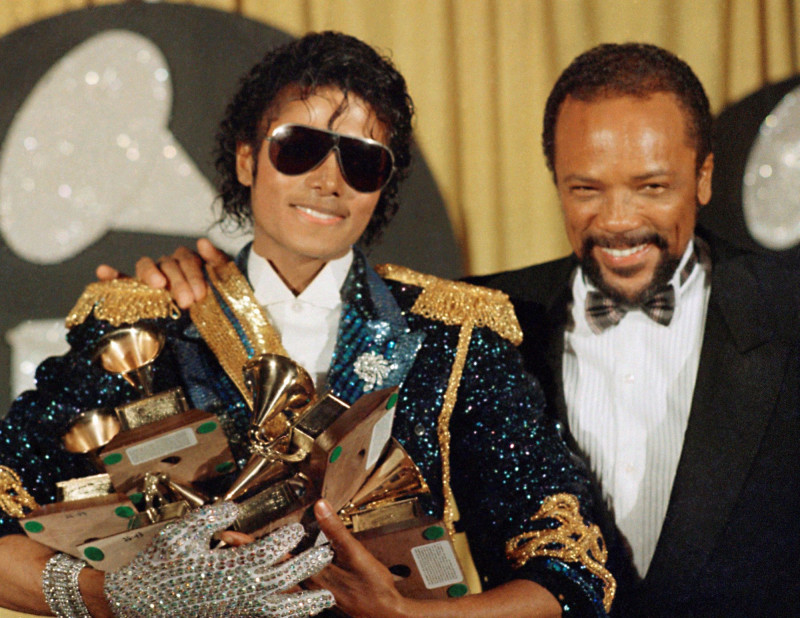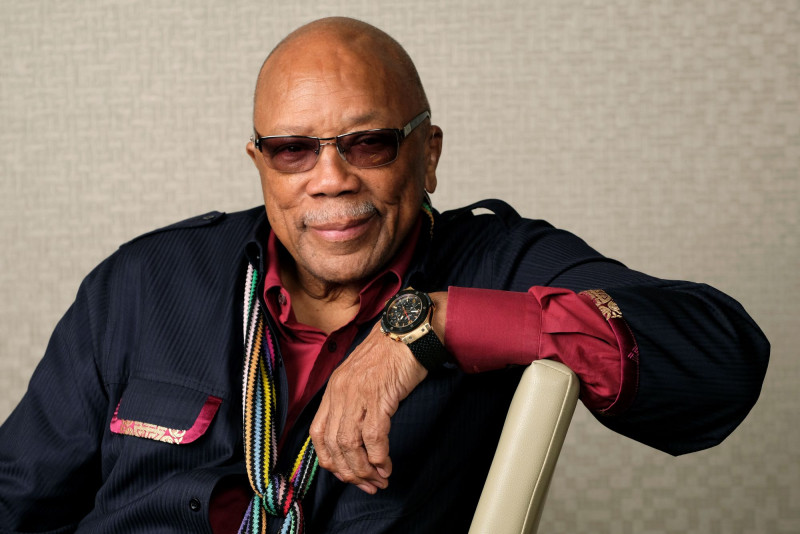During his 65-year career, the man behind the “phenomenon” Michael Jackson and the iconic “We are the World” changed the history of American music
Legendary music producer Quincy Jones – the man behind the “phenomenon” Michael Jackson and the iconic “We are the World” – died Sunday night at his home in Bel Air, Los Angeles, aged 91. years.
Jones, who became known as “Q”, had a major influence on the American music scene with his work and hundreds of collaborations with almost every major name in Hollywood from the 60s onwards.
During his 65-year career he did almost everything: he was a trumpeter, conductor, composer, producer and was awarded 27 Grammy Awards, among other honors.
Jones shaped the recordings of jazz greats such as Miles Davis, produced Sinatra and oversaw the recording of the stars who sang for charity the now historic “We are the World” in 1985 – the biggest hit of its era .
Jones has also written songs for films, and co-produced the film The Color Purple and the 1990s TV show The Prince of Bel-Air, which launched Will’s career. Smith.
He knew the greatest personalities of the 20th century
In his circle of friends were some of the greatest personalities of the 20th century.
Jones had dined with him Pablo Picassohad met with Pope John Paul in II, he had helped organize Nelson Mandela’s 90th birthday celebration and had once taken refuge on Marlon Brando’s private island in the South Pacific to recover from a nervous breakdown.
THE Bono of U2 once called him “the coolest person I’ve ever met”.
Working with Michael Jackson
Jones’ longest-running hits came in collaboration with Michael Jackson. In fact, he was the man who transformed Michael Jackson from a child star into the “King of Pop”, producing such now-iconic songs as “Billie Jean” and “Don’t Stop ‘Til You Get Enough”, and the “Thriller”.
Together they made three seminal albums — 1979’s “Off the Wall,” 1982’s “Thriller” and 1987’s “Bad” — that changed the landscape of the American music scene.
Hits like “Beat It,” “Billie Jean” and the title track made “Thriller” the best-selling album of all time, earning Jones three Grammys and Jackson seven.
In 1987, “Bad” scored five No. 1 hits, including “Smooth Criminal” and “Man in the Mirror.”
Jones’ collaboration with Jackson was historic, although Jackson’s record company initially felt that Jones was too jazzy to produce. They began in 1979 with “Off the Wall”, after the singer had split from his brothers in their band the Jackson 5.
Jackson died in 2009, and shortly thereafter Jones sued the Michael Jackson Foundation, claiming he was “cheated and lost a lot of money” from the royalties.
In July 2017, a Los Angeles jury awarded him $9.4 million.
As a child he wanted to be a gangster
Quincy Jones Jr born March 14, 1933 in Chicago. As a boy he aspired to be a gangster like the ones he saw in the downtrodden neighborhood where he lived. He was 7 years old when his mother was taken to a psychiatric hospital. His father, a carpenter, remarried and moved the family to Bremerton, Washington state, where young Quincy became involved in illegal activities.
Jones said his interest in music was born in Bremerton, when he and some friends found a piano after sneaking into his neighborhood community center during the war.
He experimented with different instruments in his school band before settling on the trumpet and at 13 he was playing jazz and rhythm-and-blues in nightclubs. In Seattle, at the age of 14, Jones met the 16-year-old Ray Charlesnot yet famous, who taught him to arrange and compose music.
Jazz pianist Count Basie and trumpeter Clark Terry also became mentors to the young Jones, who won a scholarship to what became the prestigious Berklee School of Music in Boston. However, he gave it up to pursue a career with Lionel Hampton’s band as a teenage trumpeter in the early 1950s.
“Music was the only thing I could control,” Jones wrote in his autobiography. “It was the only world that offered me freedom… I didn’t have to look for answers… Music filled me up, made me feel powerful, popular, independent and cool.”
In the late 1950s he went on US government-sponsored tours around the world with a band put together by be-pop (a type of jazz) pioneer Dizzy Gillespie. Jones then took his own band to Europe. He was deeply in debt in the early 1960s when he took a job at Mercury Records in New York and became one of the first black executives at a white record label.
Jones later founded his own record label, Qwest, as well as Vibe, a magazine covering the world of hip-hop, and was involved with various charities.
He continued to work on new projects even long after his retirement. In 2018, Jones, then 84, told GQ magazine: “I’ve never been so busy in my life.”
Jones was married three times. His first wife was a school sweetheart named Jerry Caldwell, with whom he had a daughter. His second wife was the Swedish model Ulla Andersson with whom he had two children. One, Quincy III became a hip hop producer.
His third wife was actress Peggy Lipton with whom he had two daughters, including actress Rashida Jones.
He also had two more children out of wedlock, one with actress Nastassia Kinski.
Source :Skai
I am Frederick Tuttle, who works in 247 News Agency as an author and mostly cover entertainment news. I have worked in this industry for 10 years and have gained a lot of experience. I am a very hard worker and always strive to get the best out of my work. I am also very passionate about my work and always try to keep up with the latest news and trends.












